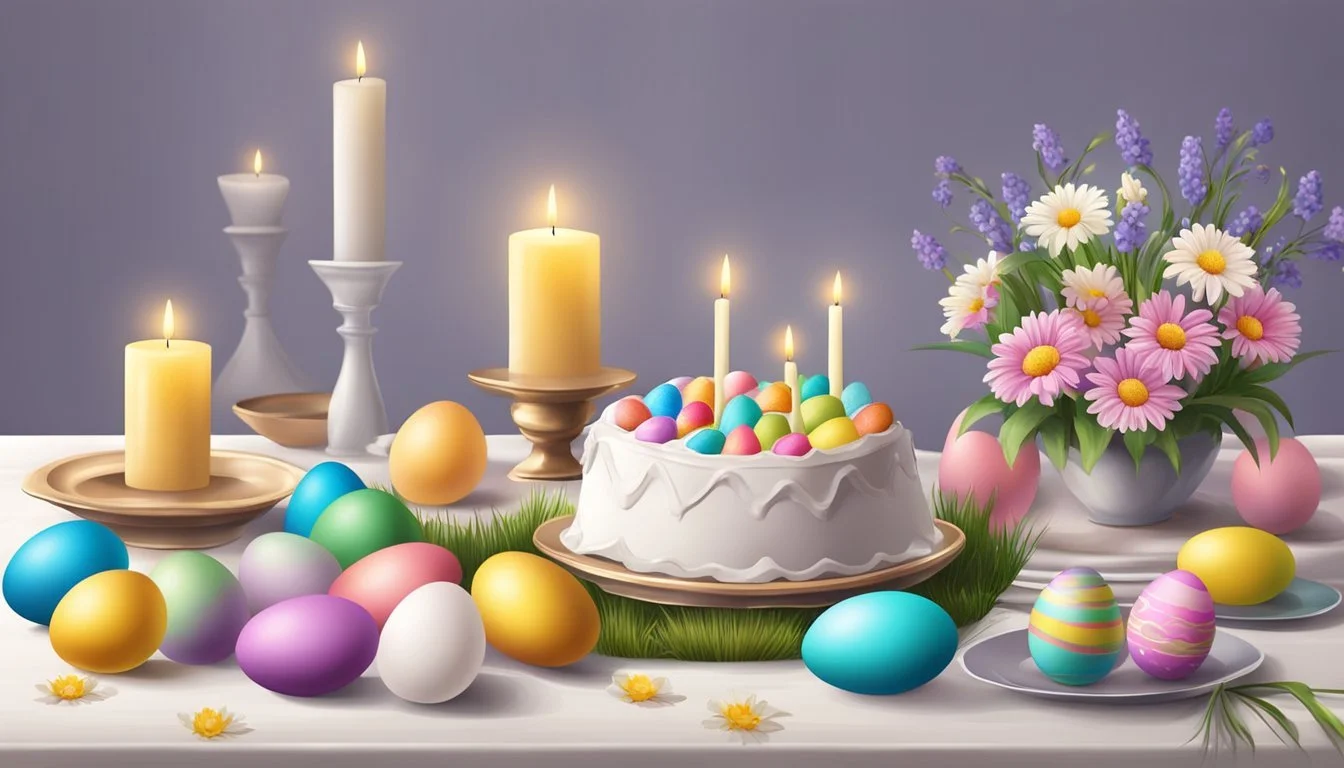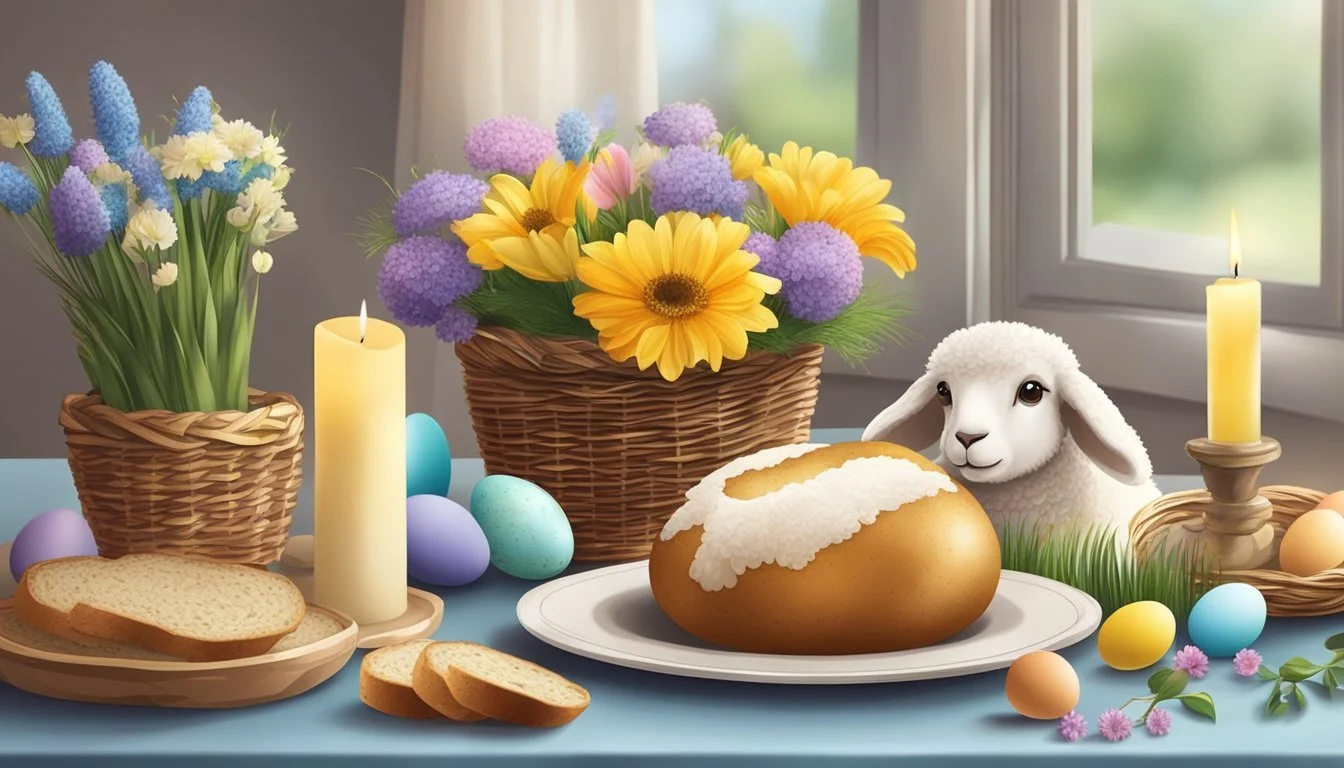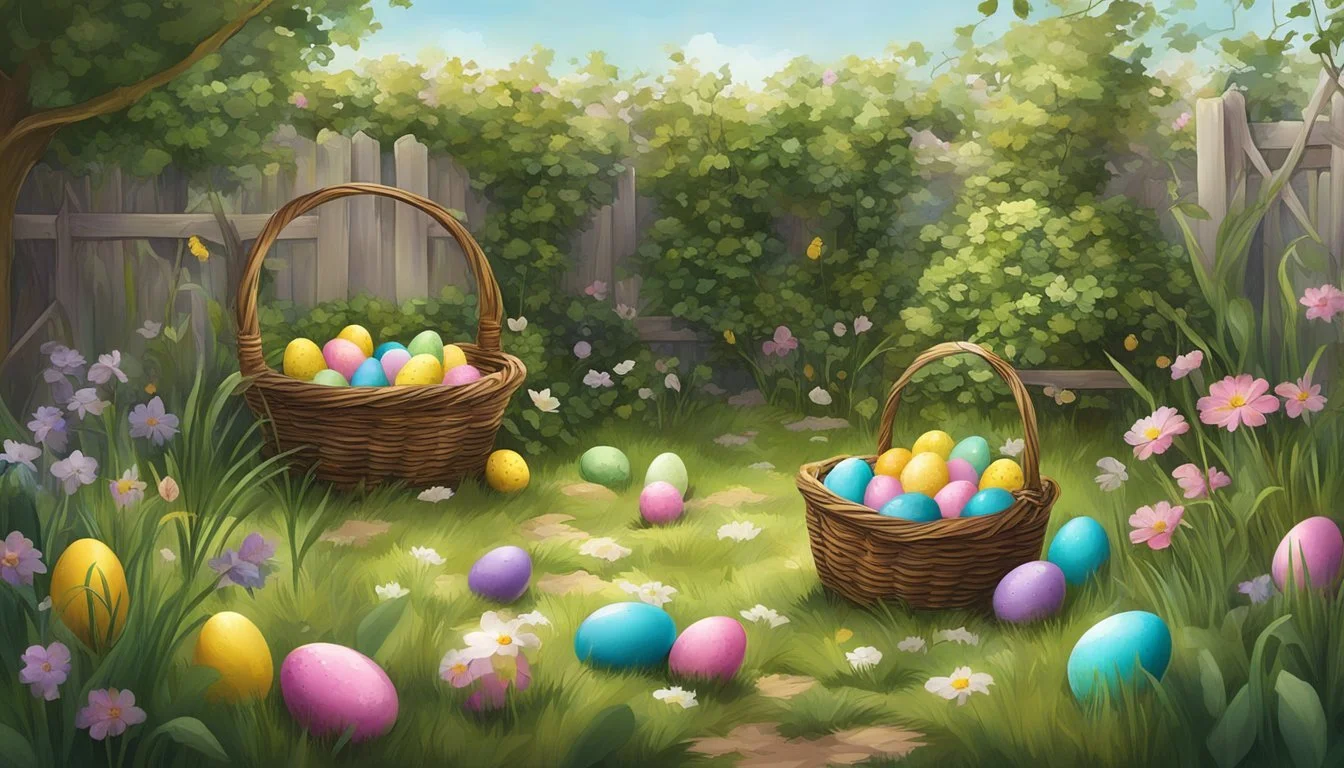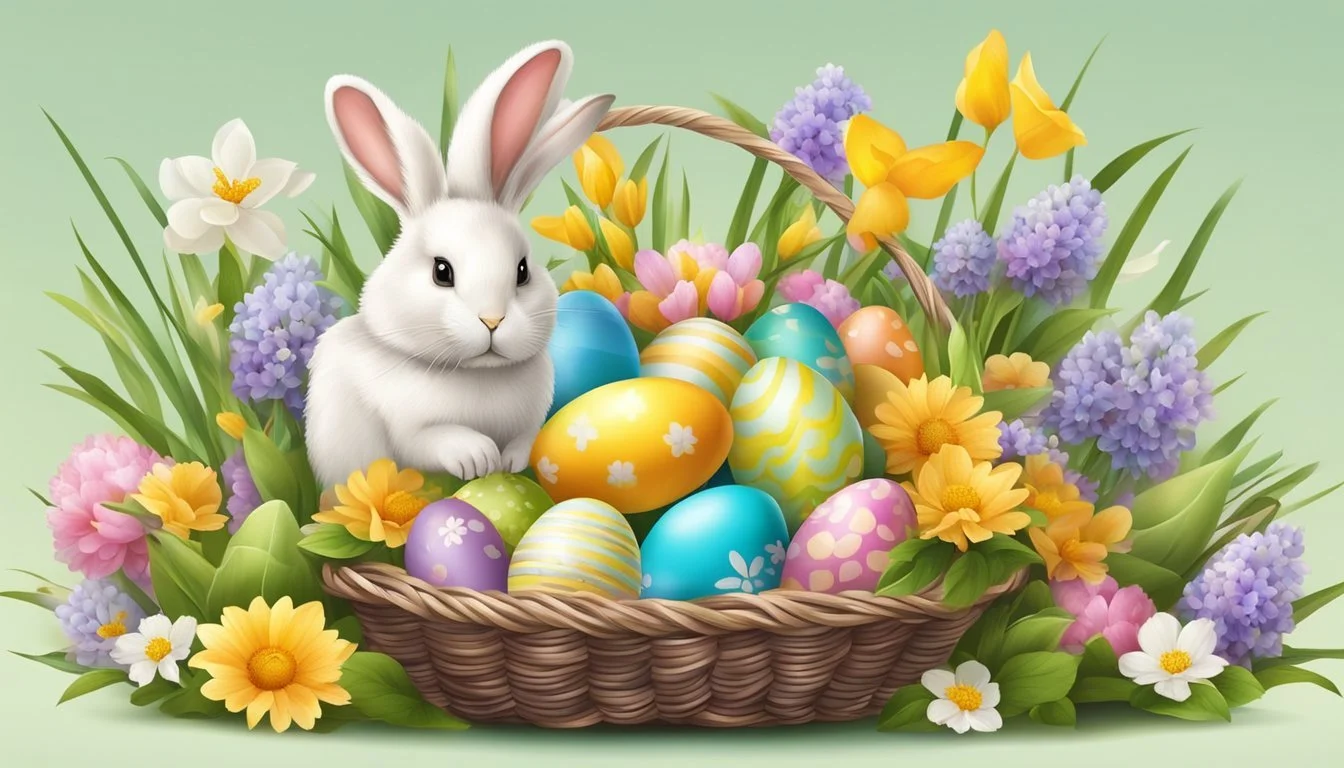Forgotten Easter Traditions
Uncovering the Charm of Bygone Celebrations
Easter, a time-honored celebration observed by millions around the world, carries with it a rich tapestry of customs and traditions. Rooted in Christian faith, it marks the resurrection of Jesus Christ and concludes the period of Lent. Over the centuries, the holiday has evolved, combining religious observances with springtime rituals. While some practices like attending church services and enjoying festive meals remain central, other customs have faded, waiting to be rediscovered and appreciated.
Throughout history, various local and cultural Easter traditions have shaped the holiday's character, creating a mosaic of unique customs. Many of these traditions, once integral to the Easter experience, have been overshadowed by contemporary practices. Reviving these old customs could lend a deeper sense of meaning and a connection to past generations.
Despite the commercialization that often accompanies modern holidays, a resurgence of interest in traditional celebrations is evident. From the clothing once worn to the games played, these forgotten facets of the Easter season offer an opportunity for reflection and reconnection with historical celebrations. Reviving these practices can enrich the contemporary Easter experience, bridging the gap between the present and the customs of yesteryear.
Historical Origins of Easter
Easter's historical origins are deeply rooted in ancient traditions and religious practices. This festival holds significant importance in the Christian faith as it commemorates the Resurrection of Jesus Christ.
From Pagan Rituals to Christian Celebrations
The word Easter is believed to have pagan origins, linked to celebrations of spring and renewal. These pre-Christian festivities marked the vernal equinox, symbolizing the victory of life over death. Easter eggs, for example, are thought to have derived from these pagan customs, representing new life and rebirth.
Christianity transformed these ancient rituals by associating them with the Resurrection of Jesus Christ. The New Testament describes how Jesus rose from the dead three days after his crucifixion, an event celebrated by Christians as Easter. This adaptation redefined springtime pagan symbols to celebrate the cornerstone of Christian faith – the belief in Jesus' victory over death.
The Church's Adoption of Easter Traditions
The Church officially recognized Easter as a major feast day in its liturgical calendar by the second century. The term Pascha, derived from the Hebrew word Pesach (Passover), became the preferred term in many Eastern Christian traditions, emphasizing the link between the Jewish Passover and Jesus' resurrection.
In 325 AD, the Council of Nicaea established uniformity for the date of Easter within the Christian community, disconnecting it from the Jewish Passover and setting it on the first Sunday after the full moon following the vernal equinox. The Church's calendar thus centered one of its most important observances, Easter, in a manner integrating both scriptural references from the Bible and established seasonal customs. Through these processes, Easter evolved from varied pagan rituals to a central celebration in Christianity, with Rome playing a significant role in its establishment across the Christian world.
The Liturgical Significance of Easter
Easter commemorates the Resurrection of Christ, marking the pinnacle of the Christian liturgical year. Churches worldwide celebrate with specific rites and observances, reflecting on the profound spiritual renewal and grace bestowed upon the faithful.
Holy Week and the Easter Triduum
Holy Week ushers in the climax of Lent and the beginning of the Easter celebrations. The Easter Triduum, spanning from Holy Thursday to Easter Sunday, is a continuous liturgical sequence. Maundy Thursday commemorates the Last Supper and Jesus' washing of the disciples' feet. Good Friday is observed with solemnity, recognizing Jesus' crucifixion and death. Holy Saturday remains a quiet day of vigil as the faithful await the Resurrection.
Easter Octave and Eastertide
Easter Sunday signals the start of the Easter Octave, eight days celebrating the joy of the Resurrection daily as if it were Easter Day. The octave culminates on Divine Mercy Sunday, emphasizing God's compassion and forgiveness. The Easter Season or Eastertide extends for fifty days, with liturgies rich in Alleluia and the joyous recital of the Regina Caeli, a hymn honoring the Virgin Mary's joy at Christ's Resurrection. This period often includes Baptisms, representing new life and the reception of grace.
Easter Traditions and Symbols
Easter, rich in tradition, symbolizes new life and joy across various cultures. Its customs, from egg hunts to the bloom of Easter lilies, represent a blend of religious significance and secular enjoyment.
Easter Eggs: From Symbolism to Hunt
Easter Eggs are a central symbol of Easter, representing new life and resurrection. They were traditionally dyed or painted, but today they are often made of chocolate and incorporated into egg hunts, which are a staple of Easter celebrations. Children eagerly participate in these hunts, searching for hidden eggs filled with treats like jelly beans and chocolate candies.
Easter Bunny and Easter Candy
The Easter Bunny, a legendary figure, plays the role of a jovial deliverer of Easter Candy. Originating from folklore, the bunny has become synonymous with Easter and is depicted as a cheerful character that brings chocolate and gifts. Confections such as chocolate bunnies and jelly beans became traditional treats that fill Easter baskets, highlighting the themes of abundance and sweetness during the festive season.
The Easter Lily and Sunday Finery
Easter Lilies, with their striking white blooms, symbolize purity, virtue, and life renewed, often adorning churches and homes during Easter. This time is also associated with the custom of wearing one's Sunday Best, where individuals don fresh, new clothes, echoing the spirit of renewal and joy. The practice reflects the desire to present oneself in a new light, reminiscent of the transformation marked by the season.
Cultural Easter Celebrations
Easter traditions vary widely across the world, encompassing unique customs and vibrant public celebrations. From time-honored religious ceremonies to secular festivity, these traditions reflect the rich cultural tapestry of Easter.
Easter Around the World
Easter is celebrated globally with an array of customs that highlight the cultural diversity of this festivity. In many European countries, white garments symbolize purity and renewal, being traditionally worn on Easter Sunday. Easter eggs, symbolizing rebirth, are common, with countries like Poland and Ukraine decorating them intricately in a practice known as pysanka. Laughter, known as "Easter laughter," was historically part of sermons in Bavaria after solemn Lenten observances.
Picnics and outdoor gatherings are a staple in Greece, where families come together to crack red-dyed eggs.
Cakes such as the Italian Colomba pasquale, shaped like a dove, are baked as a symbol of peace and resurrection.
The American Easter: Parades and Public Celebration
The United States adds its own flavor to Easter with the iconic Easter Parade, popularized by the 1948 film featuring the song "Easter Parade" by Irving Berlin. This tradition, where participants don elaborate Easter bonnets and new clothes, signifies the advent of spring and renewal.
Communal gatherings, often including parades, are an essential part of the festivities in cities like New York.
Ham frequently features as a central dish in American Easter meals, symbolizing celebration and abundance.
Visible across these practices is the shared thread of community and festivity that Easter brings into focus, where laughter and joy are integral.
Easter Food and Feasting
Easter celebrations are marked by specific traditional dishes and the cultural importance of communal dining. These customs can reflect a blend of religious significance and family heritage.
Traditional Easter Dishes
Lamb often graces the Easter dinner table, hearkening back to Passover traditions and symbolizing sacrifice and renewal. It's a central element in many cultures' celebrations, prepared in various ways, such as the Italian Abbacchio.
Hot Cross Buns: These sweet, spiced buns, marked with a cross, are commonly consumed on Good Friday, symbolizing the end of Lent.
Easter Eggs: While the Easter egg hunt is a playful family activity, eggs themselves symbolize new life. They appear in different forms, from chocolate eggs to intricately decorated ones.
Here's an overview of some Easter foods by country:
Country Traditional Dish Italy Abbacchio (roasted lamb) Eastern Europe Pierogi (stuffed dumplings) Ireland Chocolate Eggs with various fillings General Lamb (various preparations)
The Significance of Sharing a Meal
Easter meals are often referred to as the "Feast of Feasts" given their significant role in religious and family gatherings. They serve not just as a means of sustenance but also as an opportunity to strengthen bonds, share stories, and create memories. The act of sharing a meal is imbued with symbolism, reflecting the communal aspects of the holiday and embodying the spirit of togetherness.
Religious Customs and Observances
Within the framework of Easter, several religious customs and observances hold particular significance. These traditions serve to commemorate the Resurrection and reflect deep-rooted ecclesiastical heritage.
Easter Processions and the Regina Caeli
Churches often conduct Easter processions, which embody the journey of faith and the communal celebration of the Resurrection. These processions are sometimes led by a cross or an Easter candle, symbolizing the light of Christ. They are a visual and participatory reminder of the core Christian belief in Jesus having risen from the dead.
Regina Caeli or Queen of Heaven, is a traditional Marian hymn chanted or recited in place of the Angelus prayer during the Easter season. Specially recited from Easter Sunday until Pentecost, it reflects joy over the Resurrection. Many churches embrace this practice, invoking the Blessed Virgin Mary, who is often closely associated with the joy of Easter.
The Stations of Easter and the Emmaus Walk
The Stations of Easter, also known as the Via Lucis or "Way of Light," complement the traditional Stations of the Cross during Lent. Reflecting on the events following Christ's Resurrection, worshippers move through 14 stations, each depicting a moment from the Resurrection to Pentecost. This observance highlights key components of the Easter narrative, such as Mary Magdalene's encounter with Jesus and the Ascension, thus deepening the contemplative experience of the season.
The Emmaus Walk recalls the journey of two disciples walking to the village of Emmaus, during which they encountered the risen Jesus, but only recognized him when he broke bread with them. Churches sometimes reenact this walk as a form of Vespers or evening prayer service, often culminating in a shared meal or Eucharistic celebration. It symbolizes recognition of divine presence in community and scripture, linking the Resurrection to personal faith journeys.
The Aftermath of Easter
The period following Easter Sunday is significant in Christian tradition, extending celebrations and spiritual observances beyond the Resurrection.
Bright Week and Laughter
Bright Week, also known as Easter Week, starts on Easter Sunday and lasts until the following Sunday. This week is characterized by the reading of the Resurrection Gospels, which recount the events post-Christ's resurrection, during daily services. A unique aspect of Bright Week is "Laughing Monday," also referred to as "Bright Monday," which emphasizes joy and amusement within the community, including the practice of good-humored practical joking.
Continuing the Celebration: Easter Monday and Beyond
Easter traditions continue beyond Sunday with Easter Monday, a day often accompanied by public festivities and family events. Further extending the Easter celebration, Easter Tuesday is observed, though it's less prominent in modern times than the preceding days. The festive spirit of the Easter Octave continues all week, culminating on the following Sunday, marking the end of Bright Week and a gradual return to the regular liturgical practices.
Reviving Lost Easter Traditions
In an era where the festive significance of Easter can be overlooked, reviving lost traditions offers a bridge to an enriched historical and spiritual experience.
Restoring the Spirit of Lent and Easter
Lent, the 40-day period of penitence and preparation for Easter, has historically been a time of reflection and sacrifice. Traditionally, participants might have abstained from certain foods or luxuries to emulate Jesus Christ’s sacrifice and withdrawal into the desert. Father Weiser, in his "Handbook of Christian Feasts and Customs," delineates the interwoven practices of Lent and Easter, emphasizing the gradual progression from somber introspection to joyous celebration.
Lenten Preaching: This ancient custom involved dedicated sermons that delved into the meaning of the season, often focusing on principles of faith and repentance.
Health and Diet: Traditional Lenten diets, including fasting and abstinence from meat, were not only spiritual exercises but also aligned with seasonal changes, preparing the body for the transition from winter to the harvest period.
Rediscovering Forgotten Rituals and Practices
Easter traditions, vestiges of both religious and cultural importance, can be resurrected to restore the celebration's full context.
Easter Walk: In medieval times, the 'Emmaus walk' reenacted post-resurrection stories, whereby community members would take a contemplative walk to reflect on the spiritual significance of Easter.
Holy Day of Obligation: Throughout history, Easter has been a 'Holy Day of Obligation,' meaning that Christians are required to go to church on this day, recognizing its centrality to Christian faith.
Paid Holiday: Given its religious significance, Easter has often been regarded as a paid holiday in many societies, allowing for full engagement in its observance without the distraction of work.
By integrating these seasoned practices into modern observances, individuals and communities can experience a deeper sense of connection to the historical and spiritual roots of Easter.
Easter's Impact on Contemporary Culture
Easter has traditionally been a period rich in symbolism and deep cultural significance. In contemporary culture, its impact can be seen both in the transformation into a commercial holiday and in the efforts to restore its heartfelt expressions of joy and grace.
From a Celebration of New Life to a Commercial Holiday
Originally, Easter signified the resurrection of Jesus and was a time for renewal and rebirth. It embodied what can be described as the "Culture of Life," celebrating new beginnings and the triumph over despair. Over time, this sacred observance has increasingly become interwoven with commercial aspects. The widespread exchange of Easter eggs and the figure of the Easter Bunny have evolved from pagan symbols of fertility into prime examples of commercialization.
List of Commercial Influences on Easter:
Easter eggs: Once a symbol of new life, now a product mass-produced in chocolate and other confections.
Easter Bunny: A folkloric figure that has become a central part of Easter merchandise.
Easter sales: A proliferation of special offers and themed products contributing to a consumerist culture.
Reclaiming True Joy and Grace in a Modern Context
While commercial aspects have overshadowed some of Easter's deeper meanings, there remains a collective effort to reclaim its essence, particularly the concepts of discipleship and grace. These efforts reflect a rejection of nihilism and despair, promoting a return to a culture that values life and spiritual growth. Various communities engage in practices that reflect these values, seeking a more authentic experience of Easter that aligns with its origins.
Key Practices of Reclamation:
Community gatherings: Events focusing on fellowship and reflection on the tenets of discipleship.
Contemplative worship: Services dedicated to meditation on Easter's significance and the grace it signifies.
Cultural education: Teaching the historical and religious background of Easter to foster a deeper appreciation.
In striving to offset the commercialization, these practices aim to revitalize a culture that acknowledges the solemnity and joy of Easter in a way that resonates with contemporary society.
The Global Church and Easter
In observing Easter, the global Church encompasses a rich tapestry of customs that reveal the cultural diversity and deep spiritual significance of the resurrection. These traditions range from solemn ancient rituals to celebratory acts of faith, each reflecting unique historical and theological perspectives.
Orthodox and Eastern Catholic Easter Customs
The Orthodox Churches and the Eastern Catholic Church mark Easter with distinctive traditions that often vary from their Western counterparts. In particular, the Diocese of Manchester highlights the Easter devotion within these churches as a remarkable period of reflection and celebration. In the Orthodox Church, Holy Week leads to Pascha, the Easter celebration, which is filled with services rich in liturgical tradition, such as the midnight Resurrection service.
At St. Michael the Archangel Byzantine Catholic Church, parishioners celebrate the Resurrection of Christ with the blessing of baskets containing foods that have been abstained from during Lent. These baskets often include items such as eggs, bread, and meats, and are a central part of the Easter feast. Unique to Slavic countries is the tradition of exchanging Slavic Greetings, where phrases wishing health and harvest are shared among the community.
Easter as a Time for Renewal and Outreach
Easter in the global Church is not only a time for commemorating Christ’s resurrection but also an occasion for reaching out and focusing on the cycle of life and regeneration. Traditions in Northern European contexts often involve the giving of small presents, symbolizing new life and the joy of the resurrection.
Many Christians participate in activities extending beyond the church walls to engage with the broader community. This can take the form of local parades, public services, or charitable acts aimed at helping the Holy Souls and the departed. It's a time where the Jubilee Year and concepts of mercy and forgiveness are especially relevant. Some parishes, including those holding a sacred Shrine, may organize special events or pilgrimages, drawing in believers from various regions to reflect together on the Easter message.










